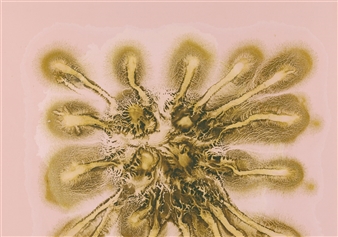PRESS & PUBLICATIONS
The Frick Pittsburgh continues its engagement with contemporary artists with “Elise Adibi: Respiration Paintings” opening Saturday in the greenhouse on the grounds of the historic campus.
Read More
Elise Adibi (b. 1965 Boston MA) received a MFA from Columbia University in 2007, she also has a BA in Philosophy from Swarthmore College, a Master of Architecture from the University of Pennsylvania. Adibi is the recipient of a Fellowship at The Radcliffe Institute for Advanced Study at Harvard University (2013-14), she has twice received grants from The Pollock-Krasner Foundation (2008 and 2013). In 2007, The Terra Foundation awarded her a fellowship in Giverny, France. Solo exhibitions include “Metabolic Paintings” at The Radcliffe Institute for Advanced Study, Harvard University, Cambridge, Mass. (2013); “Da Capo,” at Churner and Churner, New York (2012); and “A Priori,” at Southfirst, Brooklyn (2010). In 2013 Adibi was invited to participate in The Armory Show Focus curated by Eric Shiner. Selected group exhibitions include “Painting On/ Painting Off,” at Halsey McKay Gallery, East Hampton (2013), “Gertrude’s/ Lot,” The Andy Warhol Museum, Pittsburgh, PA (2011) and “Pattern vs Decoration,” The Hosfelt Gallery (2007). Adibi’s work has been reviewed in Artforum, The New York Times, The Boston Globe and the Harvard Advocate among other publications.
Elise Adibi uses the language of abstraction and primarily the grid to create paintings that are engaged in a process of temporality and embodiment. Adibi’s paintings are made from “living” matter. Her materials include: graphite and charcoal, which are forms of carbon, an element essential to all organic life; mineral pigments in oil paints; essential plant oils used for aromatherapy; rabbit skin glue, which is an animal protein; and occasionally human urine, her own. Adibi’s grid is not made of perfectly straight lines and 90 degree angles, but rather is always the result of a human and bodily process, and as such is rife with the traces of its making, including smudges, slips of the hand, erasures and accidents. In her paintings, Adibi pursues the relationship between the geometric and the biologic, nature and art, the subjective and the objective, the animate and the inanimate.
For additional information about this artist, visit Mutual Art






